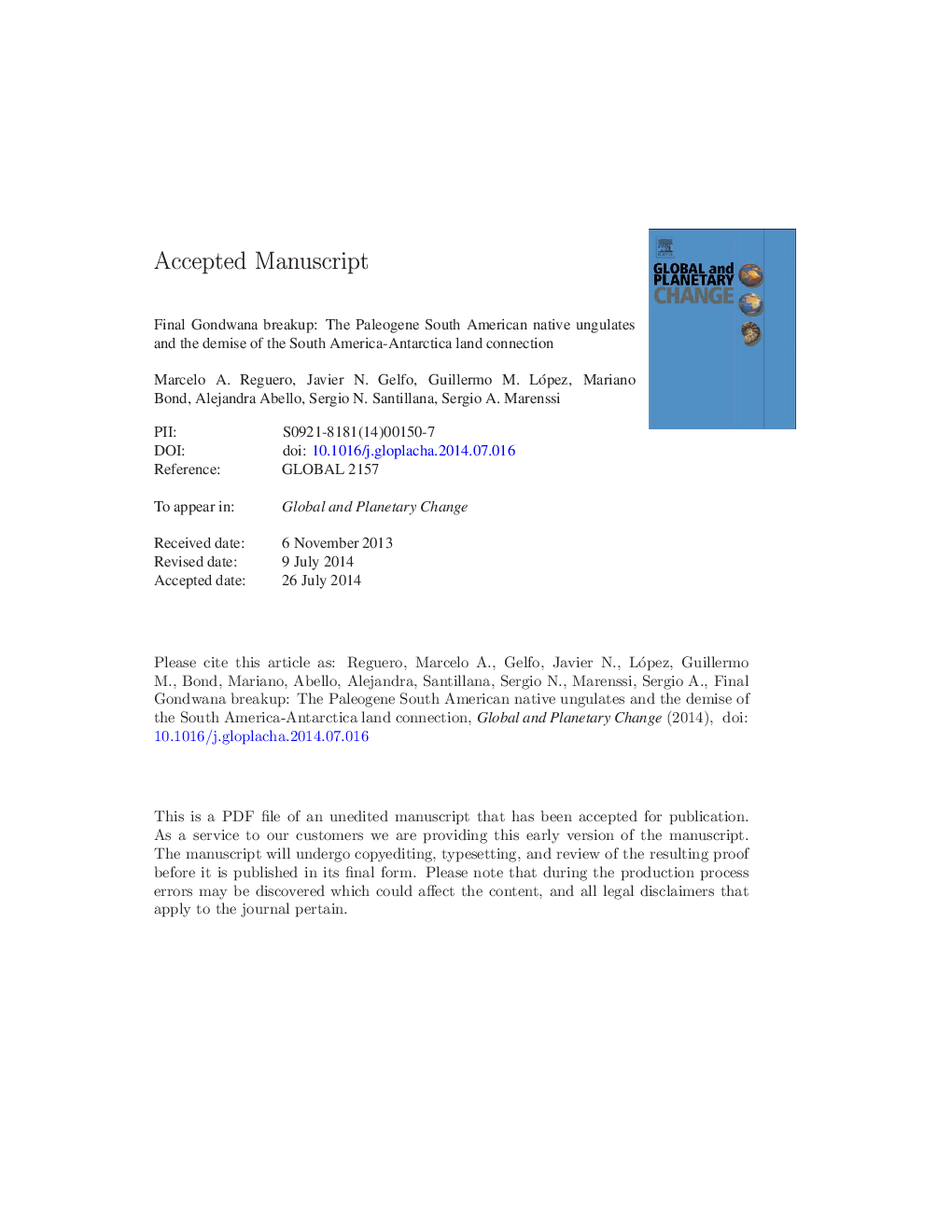| کد مقاله | کد نشریه | سال انتشار | مقاله انگلیسی | نسخه تمام متن |
|---|---|---|---|---|
| 6348167 | 1313641 | 2014 | 38 صفحه PDF | دانلود رایگان |
عنوان انگلیسی مقاله ISI
Final Gondwana breakup: The Paleogene South American native ungulates and the demise of the South America-Antarctica land connection
ترجمه فارسی عنوان
نابودی گاندوانا نهایی: پالئوژن گوسفندان بومی جنوبی آمریکای جنوبی و فروپاشی اتصال زمین جنوب امریکا و قطب جنوب
دانلود مقاله + سفارش ترجمه
دانلود مقاله ISI انگلیسی
رایگان برای ایرانیان
کلمات کلیدی
موضوعات مرتبط
مهندسی و علوم پایه
علوم زمین و سیارات
فرآیندهای سطح زمین
چکیده انگلیسی
The biogeographic hypothesis more accepted today is that Antarctica (West Antarctica) and southern South America (Magellan region, Patagonia) were connected by a long and narrow causeway (Weddellian Isthmus) between the Antarctic Peninsula and South America since the Late Cretaceous (Campanian) until the Early Paleogene allowing terrestrial vertebrates to colonize new frontiers using this land bridge. Stratigraphically calibrated phylogenies including large, terrestrial native ungulates Litopterna and Astrapotheria taxa reveal long ghost lineages that extended into the Late Paleocene and provide evidence for the minimum times at which these “native ungulates” were present both on Antarctica and South America. Based on these results we estimate that the Weddellian Isthmus was functional as a land bridge until the Late Paleocene. Our data place the disconnection between Antarctica and South America in the Late Paleocene, indicating that the terrestrial faunistic isolation (Simpson's “splendid isolation”) in South America begun at the end of the Paleocene (~Â 56 to 57Â m.y.). This faunistic isolation is documented to have occurred at least 25Â Ma before the existence of deep-water circulation conditions in Drake Passage (~Â 30Â m.y.) based on the onset of seafloor spreading in the west Scotia Sea region. We hypothesize that in the early stages of extension (Late Paleocene, ~Â 55Â m.y.) a wide and relatively shallow epicontinental sea developed between the Antarctic Peninsula and South America drowning the Weddellian Isthmus and preventing the faunal interchange for obligate cursorial terrestrial forms.
ناشر
Database: Elsevier - ScienceDirect (ساینس دایرکت)
Journal: Global and Planetary Change - Volume 123, Part B, December 2014, Pages 400-413
Journal: Global and Planetary Change - Volume 123, Part B, December 2014, Pages 400-413
نویسندگان
Marcelo A. Reguero, Javier N. Gelfo, Guillermo M. López, Mariano Bond, Alejandra Abello, Sergio N. Santillana, Sergio A. Marenssi,
